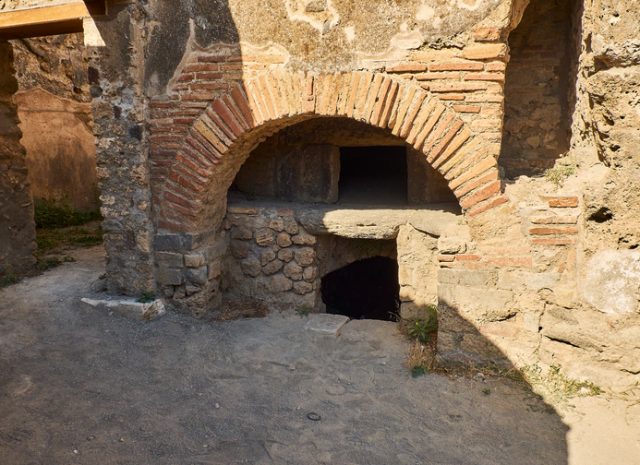
2000-year-old preserved loaf of bread found in the ruins of Pompeii
The violent eruption of Mount Vesuvius is considered to be one of the greatest natural catastrophes of the ancient world, when several cities in the Bay of Naples were covered in ash and rock, and left just as they stood on that fateful day in 79 AD.
The eruption began around midday on August 24th. In the space of just 24 hours, the cities of Pompeii and Herculaneum, along with Stabiae, Oplontis, and Boscoreale, were completely buried.
Roman bakery oven – archaeological remains at Ruins of Pompeii. The city was an ancient Roman city destroyed by the volcano Vesuvius. Pompeii, Campania, Italy.With the help of modern archaeology, the remains of more than 1,500 people were recovered, and with them numerous mundane objects, encompassing the daily life of a Roman town — frozen in time.
Herculaneum was engulfed by a fast-moving wave of hot mud, whereas Pompeii was buried by a hailstorm of ash and lumps of rock. The volcanic material solidified into up to 50 feet of rock that preserved all kinds of objects such as furniture, family portraits and mosaics. Because the rock kept out the air, organic materials including leather, wood, and foodstuffs were also saved from decay.
Advertisements
20 February 2024
Advertisements



